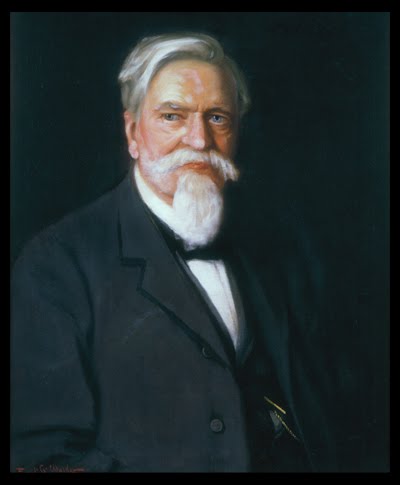
Nothing quite gets me as fired up and nerdy as talking about the War Between the States, except maybe talking about barbecue. I was raised on stories of how the Yankees burned my great-grandmother's family farm near Colesburg, even though after the war she married a Union soldier. Of course, like many Kentuckians, I have ancestors on both sides of the war (there are dozens of Union and Confederate privates and even a few Confederate generals and congressmen in my family tree) but I've always been more interested in Confederate history; I guess I'm a sucker for a Lost Cause.
When most folks think of Kentucky during the war (if they think of it at all) the first name that comes to mind is General John Hunt Morgan, the Thunderbolt of the Confederacy. Morgan was the epitomy of the Southern cavalier, tall in the saddle, feather in his hat, point Van Dyke on his chin, gallantly riding against the Yankee horde who invaded his beloved Commonwealth. Morgan spent most of the war blowing up bridges and railroads, just generally harassing Union troops and forcing them to waste a lot of time, money, and manpower they would otherwise have used to fight the Confederate Army of Tennessee. A lot of old-timers in Kentucky will tell you they have relatives who rode with Morgan, and there's even a club for them to join the "Morgan's Men Association". I don't belong myself, but as THE old-timer I got to tell you that I have a few ancestors who were in the 8th Kentucky Cavalry CS under Morgan, and one of Morgan's uncles-by-marriage is even in my family tree!
There are a whole bunch of books on Morgan and his men, some of which I'll get around to reviewing one of these days. All over the Commonwealth, from Hopkinsville to Mt Sterling, you can find historical highways markers detailing the exploits of Morgan's Raiders as they hassled the Yanks from behind enemy lines, but if you want a first-hand experience walking in his footsteps you need to visit the Hunt-Morgan House in Lexington. Owned by the non-profit Bluegrass Trust for Historic Preservation, the house was built in 1815 by Morgan's maternal grandfather and saved from the bulldozers in 1955 by a group of preservation minded citizens. Since then the home has been restored to its antebellum glory and it's waiting for you to come and tour it. In addition to the home and period furnishings the house contains a small War Between the States museum complete with saddles and sabres. The coolest items incude General Basil Duke's coat and a scale model of the Morgan statue that graces the Fayette County Courthouse lawn. The house is open seven days a week for guided tours, which cost $7 per adult. There is also a small gift shop for all of your antebellum souvenir needs, and you can even rent out the formal garden for weddings.
I guess I should mention that this isn't really Morgan's house, but his grandfather's and then his mother's. He never lived here as an adult, he lived in a house across the street (which, I should mention, he bought from the very same uncle-by-marriage whi is in my family tree, Colonel Thomas Hart). That house was torn down in 1955 and turned into a lovely parking lot. If it wasn't for the folks at the Bluegrass Trust, this home would also be a parking lot. Which is why you should join.




